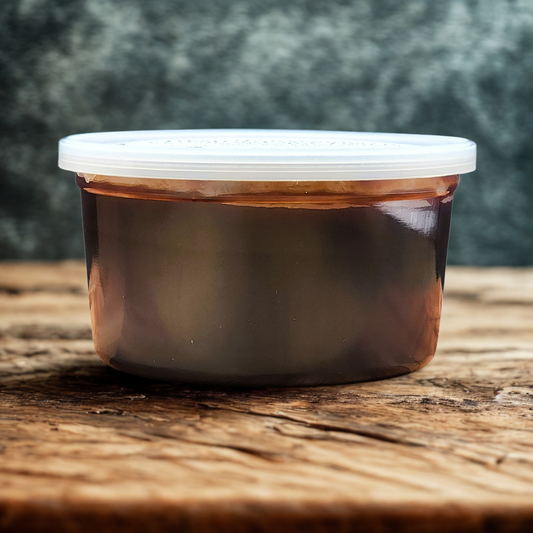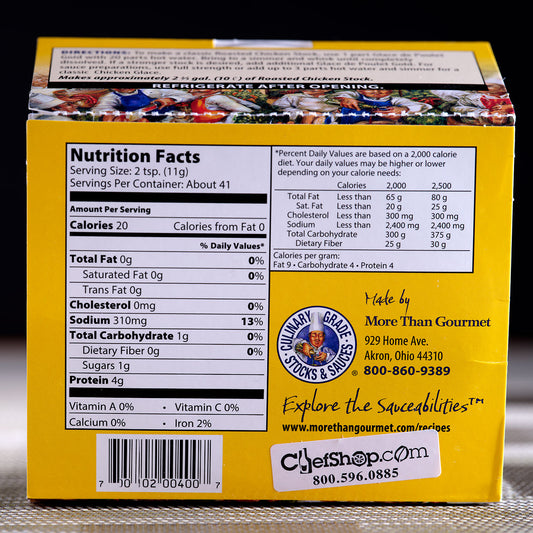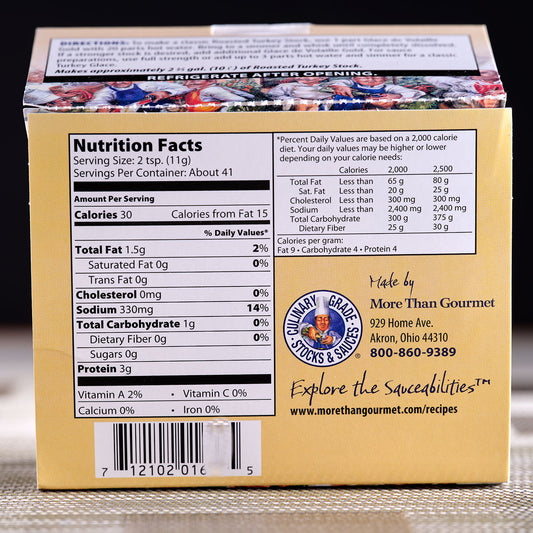Stocks
about Stocks: click here to read more
More Than Gourmet. Gluten Free except one! What this means is no filler added of excess salt, flour, soy, whey proteins etc!
And no hidden secret MSG which you might find in almost all stocks.
It's great to make your own, therapeutic for sure, let's face it when you can scoop a spoonful and broth is ready you can't beat making that last minute carrot soup!
Basic Steps to Make a Stock:
Prepare Ingredients: For meat stocks, use bones with some meat on them for flavor. For vegetable stocks, gather vegetables like onions, carrots, celery, and herbs like thyme, parsley, or bay leaves. For fish stocks, use fish bones, shells, and aromatic vegetables.
Roast (Optional): For deeper flavor, you can roast meat or bones in the oven before making the stock. This step adds a rich, caramelized flavor to the stock. Roasting vegetables for vegetable stock can also enhance the flavor.
Simmer: Place the bones (or vegetables) into a large pot and cover with cold water. Slowly bring the water to a boil, then reduce the heat to a gentle simmer. Skim off any scum or foam that rises to the top to keep the stock clear.
Add Aromatics: Add aromatics like onions, garlic, herbs (parsley, thyme, bay leaves), and seasonings (salt, peppercorns) to the pot. These will infuse the stock with additional flavor.
Cook for Several Hours: Let the stock simmer gently for hours. Meat-based stocks might cook for 3–6 hours, while vegetable stocks might take 1–2 hours. Fish stocks cook much more quickly, usually in about 30 minutes to 1 hour.
Strain: Once the stock has developed a rich flavor, strain it to remove the solids (bones, vegetables, herbs). What’s left is the liquid stock, which can be used immediately or stored for later use.
Cool and Store: Let the stock cool down to room temperature before refrigerating it. If you want to store it for longer, you can freeze it for future use.
-
Glace de Poulet Gold - Classic Roasted Chicken Stock
Regular price $49.95 USDRegular priceUnit price / per$0.00 USDSale price $49.95 USD -
Glace de Volaille Gold - Classic Roasted Turkey Stock
Regular price $63.95 USDRegular priceUnit price / per$0.00 USDSale price $63.95 USD -

 Restocking - choose Notify me
Restocking - choose Notify meMore Than Gourmet - Classic Veal Demi-Glace Gold
Regular price $58.95 USDRegular priceUnit price / per$0.00 USDSale price $58.95 USDRestocking - choose Notify me -
More Than Gourmet GF Demi-Glace - 10 Pound Bucket
Regular price $549.00 USDRegular priceUnit price / per$0.00 USDSale price $549.00 USD -
More Than Gourmet Veggie Demi-Glace - 10 Pound Bucket
Regular price $339.00 USDRegular priceUnit price / per$0.00 USDSale price $339.00 USD






